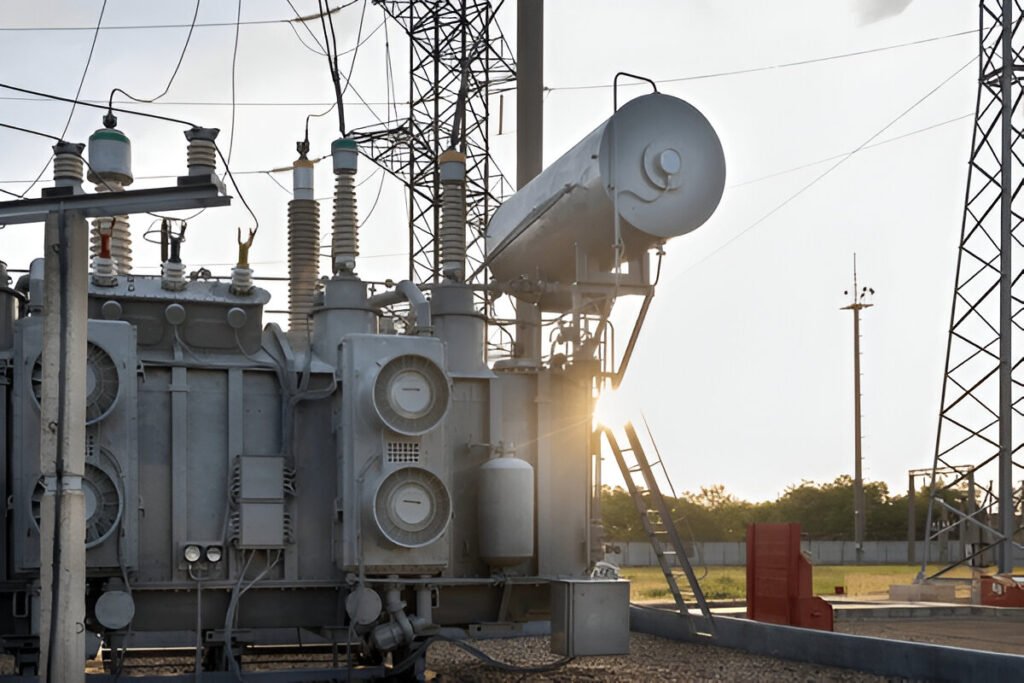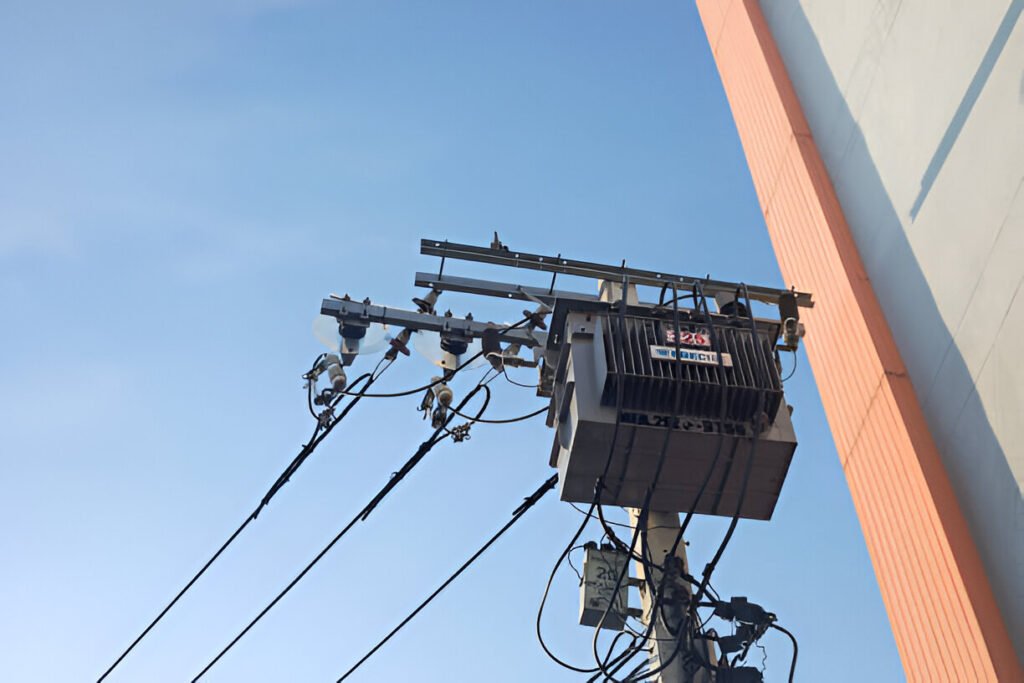What Is the Difference Between Amorphous and CRGO Transformer
Transformers are the backbone of electrical power transmission and distribution systems worldwide. Two of the most common types of core materials used in these critical devices are amorphous metal and cold-rolled grain-oriented (CRGO) steel.
While both materials enable transformers to efficiently convert voltage levels, they have distinct characteristics that impact performance, cost, and sustainability. In this post, we will explore the fundamental differences between amorphous and CRGO transformers, including their core composition, magnetic properties, efficiency, size, environmental impact, and typical applications.

What Is Amorphous Transformer
An amorphous transformer is a type of electrical transformer that utilizes amorphous metal alloys as its core material. Amorphous metals, also known as metallic glasses, are characterized by their non-crystalline, disordered atomic structure. This unique structure gives amorphous transformers several advantages over traditional transformers that use crystalline core materials like cold-rolled grain-oriented (CRGO) steel.
Amorphous metals are produced by rapidly cooling molten alloys, typically composed of iron, silicon, and boron, at rates of around 1,000,000 °C per second. This rapid cooling prevents the formation of a regular crystalline structure, resulting in a disordered, amorphous state. The amorphous metal is then wound into a core shape suitable for use in transformers.
The disordered atomic structure of amorphous metals results in low magnetic anisotropy and high electrical resistivity. These properties enable amorphous transformers to exhibit lower core losses, higher efficiency, and reduced size compared to CRGO transformers.
What Is CRGO Transformer
CRGO transformers are the most common type of transformer used in electrical power systems. They employ cold-rolled grain-oriented silicon steel as their core material. CRGO steel is a special type of silicon steel that undergoes a complex manufacturing process to align its crystal grains in the direction of the rolling. This grain orientation enhances the magnetic properties of the steel in the rolling direction.
The manufacturing process of CRGO steel involves several steps:
- Hot rolling: The steel is heated and rolled to reduce its thickness.
- Cold rolling: The steel is further rolled at room temperature to achieve the desired thickness and improve its magnetic properties.
- Decarburization annealing: The steel is heated in a decarburizing atmosphere to remove carbon, which can negatively affect magnetic properties.
- Secondary recrystallization annealing: The steel undergoes a high-temperature annealing process to promote the growth of large grains oriented in the rolling direction.
- Coating and insulation: The CRGO steel is coated with an insulating layer to reduce eddy current losses and improve overall transformer efficiency.
Difference Between Amorphous and CRGO Transformer
Core Material Composition
The primary difference between amorphous and CRGO transformers lies in the composition and structure of their core materials. Amorphous transformer cores are made from rapidly cooled alloys, typically containing iron, silicon, and boron. These alloys have a disordered, non-crystalline atomic structure, which gives them unique magnetic and electrical properties.
In contrast, CRGO transformer cores are made from cold-rolled grain-oriented silicon steel. This material has a highly ordered, crystalline structure with grains aligned in the rolling direction. The grain orientation enhances the magnetic properties of the steel in the direction of the grain, making it suitable for transformer applications.
Magnetic Properties
Amorphous metals exhibit superior magnetic properties compared to CRGO steel. The disordered atomic structure of amorphous metals results in low magnetic anisotropy, meaning that their magnetic properties are nearly isotropic (uniform in all directions). This isotropy leads to lower core losses and higher permeability.
CRGO steel, while having good magnetic properties in the grain direction, still has higher magnetic anisotropy than amorphous metals. This anisotropy contributes to higher core losses and lower permeability compared to amorphous transformers.
Cost
CRGO transformers have been the industry standard for many years, and their manufacturing process is well-established and cost-effective. The raw materials for CRGO steel are also more readily available and less expensive compared to the specialized alloys used in amorphous transformers.
Amorphous transformers, being a newer technology, have higher manufacturing costs due to the specialized equipment and processes required to produce amorphous metal cores. The raw materials for amorphous alloys are also more expensive than those for CRGO steel. However, the higher initial cost of amorphous transformers can be offset by their improved efficiency and reduced energy losses over their lifetime.
Efficiency
Amorphous transformers offer significantly higher efficiency than CRGO transformers. The lower core losses of amorphous metals result in reduced energy dissipation and heat generation within the transformer. This higher efficiency can lead to substantial energy savings over the transformer’s lifetime, particularly in applications with high load factors or continuous operation.
CRGO transformers, while still efficient, have higher core losses than amorphous transformers. These losses contribute to reduced overall efficiency and increased energy consumption. In applications where energy efficiency is a primary concern, amorphous transformers can provide a significant advantage.
Size and Weight
Amorphous transformers can be designed with smaller core sizes and lower weights compared to CRGO transformers of the same power rating. The higher permeability and lower core losses of amorphous metals allow for the use of less core material, resulting in more compact transformer designs.
CRGO transformers, due to their higher core losses and lower permeability, require larger core sizes to achieve the same power rating as amorphous transformers. This results in physically larger and heavier transformers, which can be a disadvantage in applications where space is limited, or weight is a concern.
Environmental Impact
Amorphous transformers offer several environmental benefits compared to CRGO transformers. The higher efficiency of amorphous transformers leads to reduced energy consumption and, consequently, lower greenhouse gas emissions associated with electricity generation. Additionally, the smaller size and weight of amorphous transformers can result in reduced material usage and lower transportation costs, further minimizing their environmental footprint.
CRGO transformers, while still a reliable and widely used technology, have a larger environmental impact due to their lower efficiency and larger size. The higher energy losses and increased material usage contribute to greater greenhouse gas emissions and resource consumption.
Applications
Amorphous transformers are particularly well-suited for applications that require high efficiency, low noise, and compact size. Some common applications include:
- Distribution transformers for residential and commercial buildings
- Power transformers for renewable energy systems, such as solar and wind power plants
- Transformers for high-frequency power conversion, such as in switched-mode power supplies
- Instrument transformers for accurate current and voltage measurements
CRGO transformers, due to their cost-effectiveness and well-established manufacturing process, are widely used in a variety of applications, including:
- Power transformers for electrical transmission and distribution networks
- Distribution transformers for industrial and commercial facilities
- Transformers for power generation plants, such as thermal and hydroelectric power stations
- Specialty transformers for specific industrial applications, such as furnace transformers and rectifier transformers


